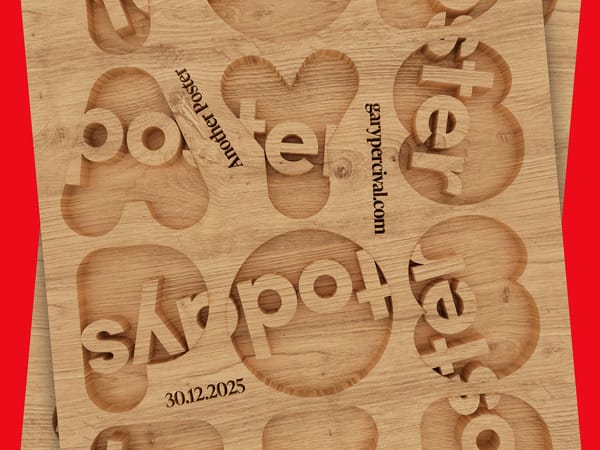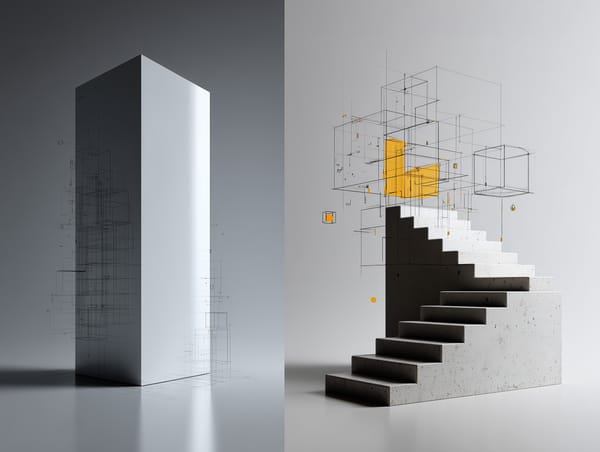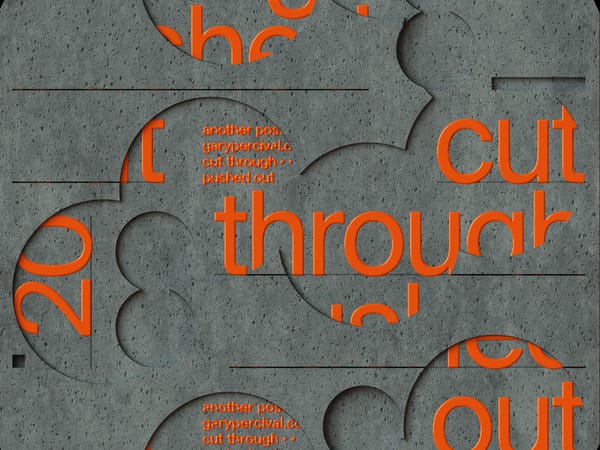The Difference Between Interest and Commitment: Why Going All-In Matters
“The difference between interest and commitment is the difference between dabbling and mastery—between a job and a calling.”

As freelancers, graphic designers, and creatives, we frequently find ourselves at a pivotal point in our careers.
“The difference between interest and commitment is the difference between dabbling and mastery—between a job and a calling.”
On one side, there's the path of interest—a casual exploration of our craft, dipping our toes into various projects and ideas. On the other hand, there's commitment—a full-fledged dedication to our chosen field, with all the challenges and rewards it entails.
Understanding the difference between these two approaches is crucial for anyone looking to make a lasting impact in the creative world.
Interest vs. Commitment: Defining the Terms
Interest
Interest is like a spark. It's that initial excitement you feel when you discover a new design technique or land your first client. It's the thrill of possibility, the allure of potential. Interest is what gets you started, what makes you say, "Hey, I could do this."
Commitment
Commitment, on the other hand, is the fire that keeps burning long after that initial spark has faded. It's showing up day after day, even when inspiration is nowhere to be found. It's pushing through challenges, learning from failures, and constantly striving to improve your craft.
The Pitfalls of Mere Interest
Many of us start our creative journeys fuelled by interest alone. We're drawn to the glamour of the creative life and the idea of making a living through our passion. But interest, while a great starting point, has its limitations:
- Lack of Depth: When we're merely interested in something, we tend to skim the surface. We might learn the basics of a design software or try our hand at a few projects, but we shy away from the deep dive that true mastery requires.
- Inconsistency: Interest waxes and wanes. One week, we might be all about typography; the next, we're chasing the latest UI trend. This lack of focus can prevent us from developing a unique style or specialised skill set.
- Easy Discouragement: When interest is our primary driver, setbacks hit harder. A difficult client or a project that doesn't turn out as planned can make us question whether this path is right for us.
- Limited Growth: Interest alone rarely pushes us out of our comfort zone. We stick to what we know, what feels good, and what comes easily. As a result, our skills plateau and our work becomes stagnant.
“Interest might get you started, but commitment will carry you through the challenges and lead to a fulfilling creative career.”
The Power of Commitment
Commitment is what separates hobbyists from professionals and dabblers from masters. When you dedicate yourself to your craft, everything changes.
- Mastery Through Persistence: True commitment means showing up every day, honing your skills, and pushing through the inevitable plateaus. It’s about putting in the hard work, not just when it’s enjoyable, but also when the going gets tough.
- Resilience in Adversity: A committed mindset transforms setbacks into valuable learning experiences. Instead of viewing challenges as roadblocks, you see them as opportunities to problem-solve, innovate, and grow.
- Cultivating a Unique Voice: Commitment allows you to dive deep into your art, uncovering its intricacies and developing your own distinctive style. This unique perspective is what helps you stand out in a crowded marketplace.
- Professional Growth: Committed creatives not only improve their technical skills but also cultivate essential professional competencies, such as client management, business savvy, and networking prowess.
- Long-Term Vision: Commitment empowers you to look beyond immediate projects or short-term gains. You begin to build a cohesive body of work, establish a reputation, and create a career path that aligns with your values and aspirations.
The Commitment Mindset in Action
So what does commitment look like in the day-to-day life of a creative professional? Here are some examples:
- Continuous Learning: Committed designers don't rest on their laurels. They're always learning new techniques, exploring emerging technologies, and staying abreast of industry trends.
- Deliberate Practice: Instead of mindlessly scrolling through design inspiration, committed creatives engage in deliberate practice. They analyse great work, deconstruct it, and apply those lessons to their own projects.
- Building a Community: Commitment often extends beyond individual work. Committed creatives engage with their peers, mentor newcomers, and contribute to the larger design community.
- Embracing Feedback: Rather than getting defensive about criticism, committed designers seek out constructive feedback. They understand that outside perspectives are crucial for growth.
- Balancing Creativity and Business: True commitment means embracing all aspects of the creative life, including the less glamorous business side. This involves learning about contracts, pricing, and client relationships.
The Challenges of Going All-In
Let's be clear: commitment isn't easy. It comes with its own set of challenges:
- Fear of Failure: When you're all in, the stakes feel higher. The fear of not being good enough can be paralysing.
- Burnout Risk: Commitment without boundaries can lead to overwork and burnout. It's important to find a pace at which you can keep up.
- Financial Uncertainty: Especially in the early stages, committing to a creative career can mean financial instability.
- Doubts and second-guessing: Even the most committed creatives have moments of doubt, wondering if they've chosen the right path.
Overcoming these challenges is part of the commitment journey. It requires developing resilience, building a support network, and constantly reconnecting with your core motivations.
The Rewards of Commitment
While the challenges are undeniable, the rewards of wholeheartedly committing to your creative path are profound:
- Personal Fulfilment: There’s an unmatched satisfaction that comes from knowing you’re pouring your heart and soul into your craft.
- Professional Recognition: Commitment often leads to excellence, garnering respect and recognition from both peers and clients alike.
- Financial Success: Although not guaranteed, dedication significantly enhances your potential for financial success in your chosen field.
- Meaningful Impact: Committed creatives have the power to make a genuine impact—whether through innovative designs, mentoring others, or influencing industry trends.
- Enduring Legacy: By fully dedicating yourself to your craft, you create a body of work that transcends time, leaving a lasting legacy in your field.
The Role of Passion
It's worth noting that commitment doesn't always feel passionate. There will be days when you don't feel inspired, when the work feels like a grind. This is where many creatives falter, mistaking a lack of constant passion for a lack of commitment.
“True commitment transcends fleeting emotions; it’s about showing up and doing the work, regardless of how you feel in the moment.”
Paradoxically, this consistent effort often reignites passion, creating a positive feedback loop of commitment and enthusiasm.
Commitment in the Face of Change
The creative industry is constantly evolving. New technologies emerge, design trends shift, and client expectations change. In this dynamic environment, commitment doesn't mean rigidly sticking to one way of doing things. Instead, it means committing to evolution and growth.
Committed creatives are lifelong learners. They're not afraid to pivot, to expand their skill set, or to venture into new areas of their field.
This adaptability, rooted in a core commitment to their craft, is what enables long-term success in the creative industries.
Conclusion: The Power of Going All-In
In the end, the difference between interest and commitment is the difference between dabbling and mastery, between a job and a calling. While interest might get you started, it's a commitment that will carry you through the challenges, push you to new heights, and ultimately lead to a fulfilling and impactful creative career.
As you navigate your path as a freelancer, graphic designer, or creative professional, ask yourself: Am I merely interested, or am I truly committed? Are you willing to put in the hard work, face the challenges, and push through the plateaus? Are you ready to go all in?
Remember, commitment doesn't mean you have to have it all figured out from the start. It's a journey, a daily choice to show up, to learn, to create, and to grow. It's about dedicating yourself to the process and trusting that the results will follow.
So, to all the creatives out there: embrace commitment. Go all-in on your craft. The road may not always be easy, but the rewards—personal, professional, and creative—are immeasurable. Your unique voice, your innovative designs, and your impactful work—they're all waiting on the other side of commitment. Are you ready to make the leap?



